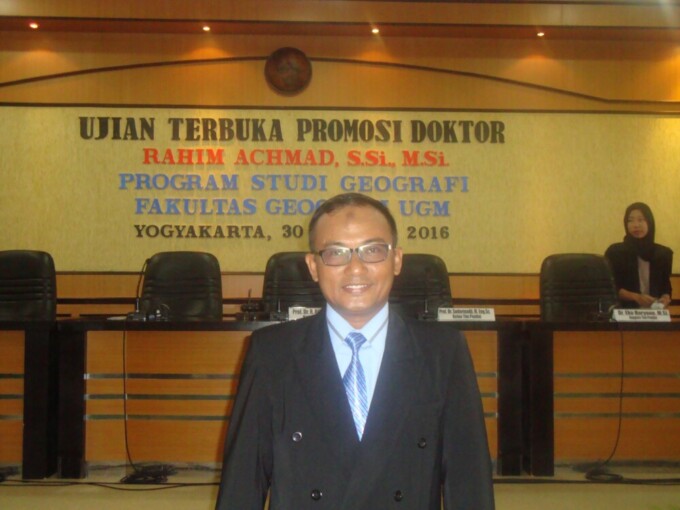
Characteristics and repetitions of eruptions of Mt. Gamalama have indirectly created rock stratification that also serves to form aquifers. As such, the aquifer system of Ternate island is divided into three main parts, being aquifer system with flows through fissures, aquifer system with flows between granular materials and aquifer system with flows through both granular materials and fissures.
Based on geoelectricity measures, the rocks that form the aquifer system with flows through granular material space has low rock resistivity value. This indicates that aquifer system with flows through granular material space is saturated with free groundwater and have high productivity as compared to other aquifer systems.
“The materials that form the aquifer system are pyroclastic and alluvial sediments with grains from smooth to raw that are less cohesive, while the texture certainly has high porosity,” said Rahim Achmad, lecturer of FKIP Universitas Khairun, during his open doctoral examination at Faculty of Geography, Universitas Gadjah Mada (UGM) on Saturday (30/1).
With dissertation entitled the Hydrology of Ternate Island, Rahim was sitting for the exam, accompanied by promoter, Dr. M. Pramono Hadi, M.Sc, and co-promoter, Prof. Dr. Ig.L. Setyawan P, M.Si. Rahim said that aquifer system and free groundwater pattern in a small volcanic island is an integrated hydrology system.
According to Rahim, the aquifer system of Ternate island which is controlled by rock fissures and space between granular materials of volcanic sediment closely corresponds to the free groundwater pattern of Ternate island. Space between fissures gap of igneous rocks and space between granular materials of volcanic sediment becomes the space and way for the water to flow.
The groundwater flow system in Ternate which is radial from the summit down to the coastal areas has obviously run through three aquifer systems. Groundwater routes from the summit down to the springs, groundwater, and lake water create a hydrology system of the small volcanic island that is integrated between each other.
“The unity of hydrology system of the small volcanic island can be made a pattern for several islands on the western part of Halmahera island. This is made possible due to the same geological condition, climate, precipitation characteristics, and geomorphology of volcanic islands,” said Rahim Achmad.


